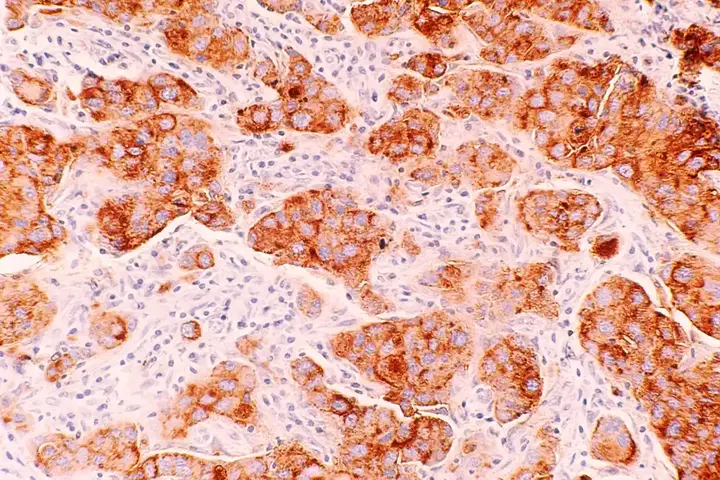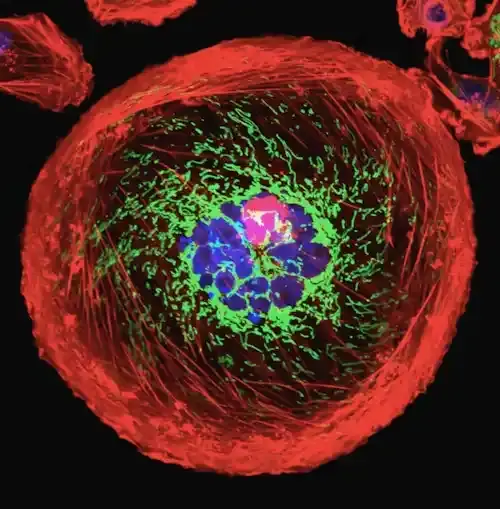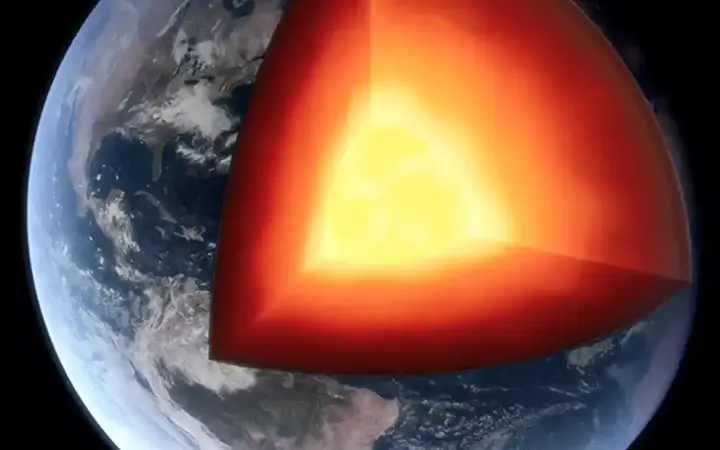What happens to cancer cells when they die?
Cancer cells are cells that constantly divide, forming solid tumors or flooding blood or lymph with abnormal cells. Cell division is a natural process that the body uses for growth and repair. The mother cell divides to form two daughter cells, and these daughter cells are used to build new tissue or to replace cells that have died due to aging or damage. Healthy cells stop dividing when no more newborn cells are needed, but cancer cells continue to produce copies of them. It is also able to spread from one part of the body to another and multiply there uncontrollably, so we call it a malignant tumor.
Classification of cancer cells

There are different classes of cancer cells, determined according to the type of cell from which they originate.
Recommend
Carcinoma: The majority of cancer cells are epithelial in origin, starting in the tissues that line the inner or outer surfaces of the body.
Leukemia: It originates in the tissues responsible for the production of new blood cells, most commonly in the bone marrow.
Lymphoma: Lymphoma and myeloma, derived from cells of the immune system.
Ttessarcoma: It originates in connective tissues, including fat, muscle and bones.
Cancer of the central nervous system: derived from brain and spinal cord cells. Mesothelioma: which originates in mesothelioma, which is the lining of the body cavities.
Cancer treatments aim to kill cancer cells, and the immune system is tasked with getting rid of the resulting cellular bodies.
What happens to cancer cells after being killed by treatment

Cancer treatments, such as chemotherapy, kill cancer cells, often by pushing them to self-destruct, wilting and dying quietly, or less commonly, by triggering a more explosive form of cell death.
But what happens to cancer cells after they die? Normally, killed cancer cells are recycled in the same way as any other dead cell in the body. When cancer cells end, their outer membranes are usually compromised. This occurs in the "quiet" form of cell death, called apoptosis, a programmed process used to remove unnecessary or damaged cells from the body. Once the molecular keys that lead to apoptosis are triggered, the dying cell shrinks and parts of its membrane separate into "bubbles." This causes the internal components of the cells to leak and attract phagocytes, which are immune cells responsible for devouring cellular debris.
The summoned phagocytes swallow the dead cancer cells and then break them down into smaller components, such as sugars and nucleic acids, which are the chain-like molecules found in DNA. Through this process, the dead cancer cells are recycled into components that can later be reused by other cells.
In the case of apoptosis – a type of cell death cancer treatments that have traditionally been designed to induce the recycling of parts of cancer cells which generally occurs this way rather than being excreted by the body, in the urine, for example. Cancer treatments can sometimes also lead to other types of cell death, such as cell necrosis, the "explosive" form of cell death in which cancer cells swell and explode instead of shrinking. Phagocytes also efficiently devour this type of dead cell However, dying cancer cells do not always pass quietly. Studies show that by releasing numerous debris that triggers an inflammatory reaction, cells can sometimes promote the growth of cancer cells that survive nearby. This phenomenon, known as the Révész effect, may help explain how some cancers return after treatment. It was first observed in the fifties of the last century in mice with tumors.
Studies & Research

More recently, a 2018 study in mice and cells in lab dishes found that radiation and chemotherapy can trigger the release of inflammatory cytokines, molecules released by immune cells that trigger the inflammatory reaction and can sometimes support tumor growth. Immune cells known as phagocytes devour dying cancer cells and then recycle them. Dr. Deepak Panegrahi, co-author of the study and assistant professor of pathology at Beth Deaconess Medical Center in Boston, told Live Science that macrophages, a type of phagocyte, release these molecules in an attempt to fight cancer.
A 2023 study in mice by a different group found that control centers, or nuclei of dying cancer cells, can swell and sometimes explode, thereby ejecting DNA and other molecules into their surroundings. These spilled particles can accelerate the spread of malignancy, meaning cancer cells spread far beyond their original tumor. These studies help shed light on how cancer cell death contributes to cancer development and relapse. However, the research is still in its relatively early stages, and scientists have not yet understood the full implications of this link. With more research, researchers aim to better understand the biological mechanisms underlying cancer and thus develop more effective treatments for the disease. For example, a 2018 study highlighted a way to counteract tumor growth caused by dead cancer cell debris: omega-3-derived molecules that can help reduce inflammation and cytokine effects while stimulating cell debris. "The main problem with cancer is that there are no treatments that stimulate the resolution of inflammatory reactions and reduce cytokine regulation and debris removal," Panegrahi said. Their study suggests that resulfins could be one way to address these problems. However, scientists are still constrained by an exact solution to this problem: how and whether these molecules may help fight cancer. On the other hand, the 2023 Nature study identified how living cancer cells recognize and respond to signals sent by dying cells. The study suggests that blocking dead cell messages could help prevent cancer from reappearing after treatment. More work is needed to figure it out for sure.
![]()
The most impressed Japanese techniques in modern times
Japan keeps surprising the world with weird yet useful inventions—like heated toilet seats and noise-canceling forks. One standout? Healthcare robots that assist the elderly, making life easier and healthcare smarter. Also, karaoke, born in Japan, totally changed entertainment. It's clear: Japan knows how to mix fun, tech, and innovation. more- ADVERTISEMENT
![]()
How does fear work? What is phobias?
How does fear work? What is phobias? more- ADVERTISEMENT
![]()
Saving and portfolio diversification - concepts you should know
Saving & Financial Portfolios Diversity - Concepts you should know more- ADVERTISEMENT
![]()
A piece of the earth's crust is missing, and scientists are discovering its whereabouts!
A piece of the earth's crust is missing, and scientists are discovering its whereabouts! more- ADVERTISEMENT
![]()
Historic Nizwa Fort... The splendor of construction since the seventeenth century AD
Nizwa, once Oman's capital, is famed for its mighty fort, rich history, and stunning mountain views. Its iconic circular tower, ancient defenses, and vibrant museum make it a top spot for visitors seeking a real taste of Omani heritage and breathtaking panoramas. more- ADVERTISEMENT
![]()
Negotiation skills for successful personal and practical relationships
Negotiation isn’t just for business or politics—it’s a vital life skill. It’s about finding win-win outcomes using communication, persuasion, and emotional intelligence. Whether you're a parent, partner, or student, mastering this skill strengthens relationships and helps navigate daily challenges with understanding, planning, and strategic thinking. more- ADVERTISEMENT
![]()
The botanical marvel of the Andean ecosystem at high altitudes
The Andes are home to rare, exotic plants that have adapted to extreme climates with stunning shapes and colors. From insect-trapping fleshy plants to breathtaking orchids and mythical species like the giant vernie, these botanical wonders mesmerize with their beauty and resilience, yet face serious threats from climate change and human exploitation. more- ADVERTISEMENT
![]()
The most important job market skills - how to become a graphic designer?
Graphic design is a creative field where your imagination meets visual communication. It’s not just about art—it’s about problem solving, storytelling, and expressing ideas. With the right skills, passion, and patience, you can turn your love for design into a rewarding profession that AI can’t fully replace. more- ADVERTISEMENT
![]()
Success Guide - How to leave any bad habit?
Getting rid of bad habits takes time, effort, and patience. Focus on one habit at a time, understand your triggers, and replace the habit with a positive alternative. Stay realistic, reward progress, and don’t be discouraged by setbacks—just get back on track and keep going. more- ADVERTISEMENT
![]()
The most important technical programs for mobile and computer that are indispensable for everyone
Mobile phones and computers are essential in modern life, and with the right free tools, they can boost your productivity and simplify daily tasks. Apps like Google Chrome, Google Drive, LibreOffice, and VLC Media Player are easy to use and help you stay efficient, secure, and entertained. more- ADVERTISEMENT





















